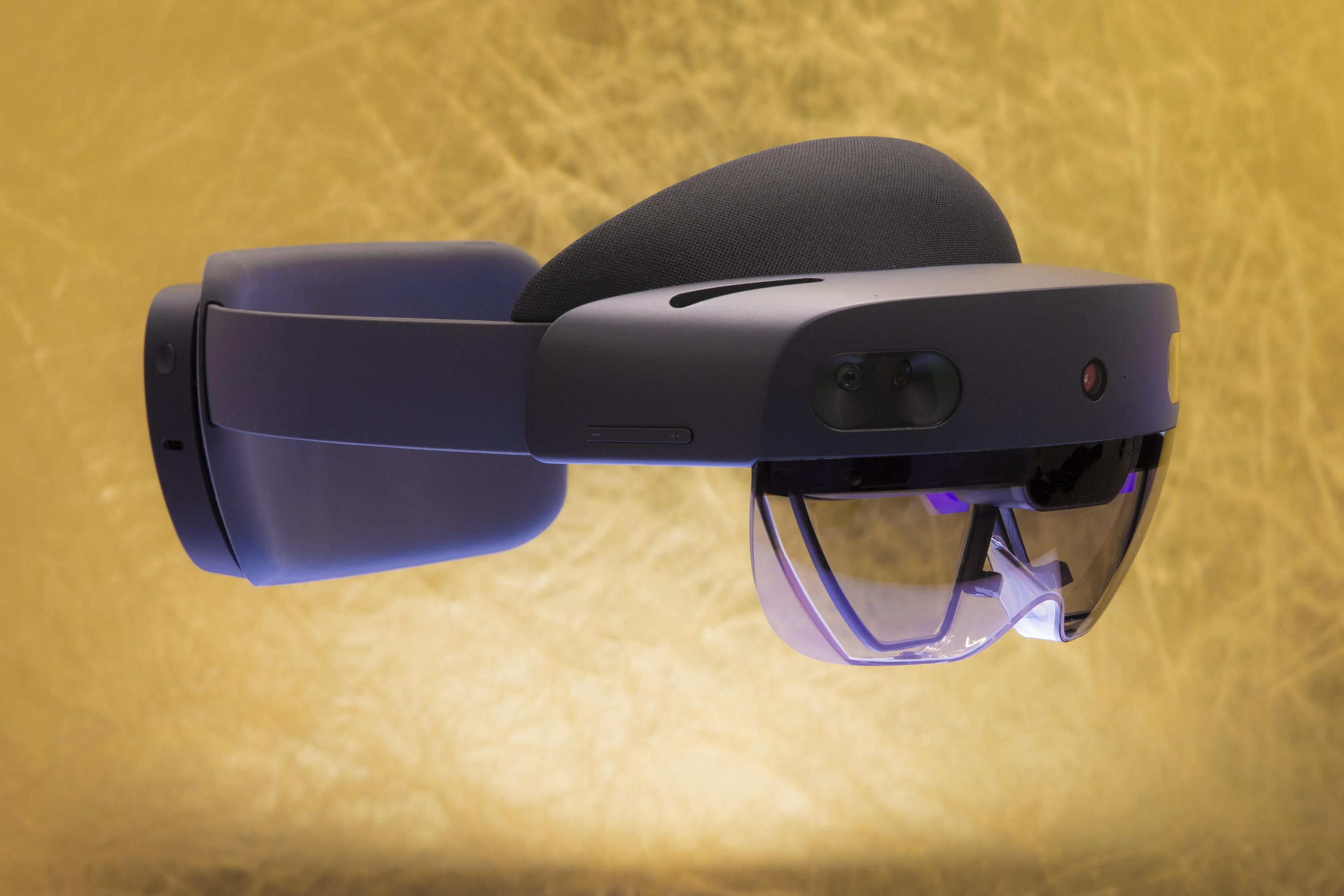The Hololens is back and better than ever. Microsoft has announced that later this year they will be selling the official Hololens 2. This hasn’t come as much of a shock to anyone as the original Hololens has been available for a few years now. This headset comes with a pretty heavy redesign, and it is all for the better. Not only have the outsides gotten better, but the insides of this wearable and wireless computer have improved immensely. Let’s dissect everything Microsoft is giving us inside and outside of this headset, and what the future of augmented reality headsets have in store for us.
Hololens 2 has a new feature that has changed the way you follow directions while wearing the headset. Not only has the Dynamics 365 Guide made everything easier to see, but it knows what the end task and the individual pieces to everything better than the original Hololens did. The field of view on version 2 is noticeably better, and objects don’t fade out of existence when you turn your head anymore.
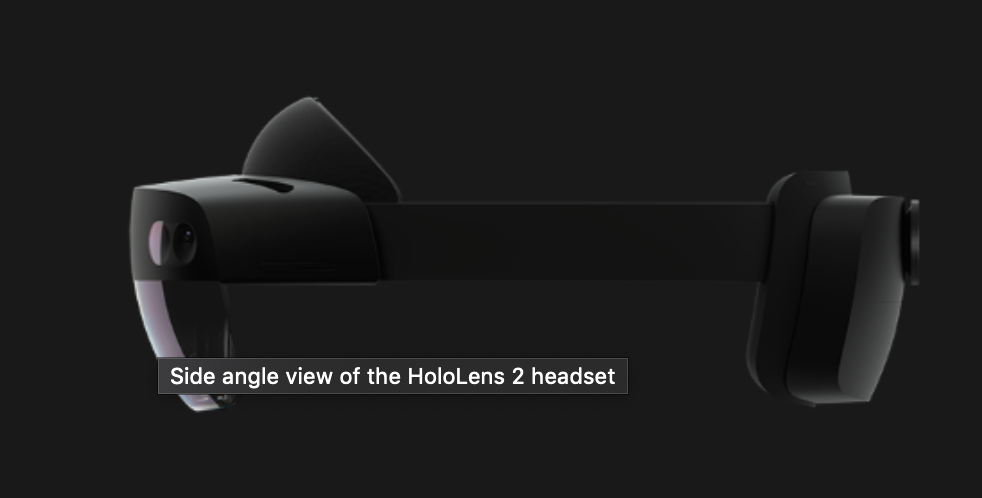
The price point for the Hololens 2 will set your company back a soft $3,500, a price tag $500 more expensive than the first version of this mixed reality device. (The first headset commercially sold at $5,000.) $500 is nothing to a buyer when the headset upgraded. The new software inside of this headset will make this purchase more than worth it. Once you get your hands on your first purchase, it’ll only be a matter of time before your business has multiple in front of everybody’s eyes. This headset is not an average consumer product. This is a platform for business and factory workers.
Magic You Can See
Augmented reality and virtual reality isn’t just a hopeful wish anymore. This is part of our reality today, and the consumer tech will only get stronger tomorrow. With Apple and Google getting involved in holographic technology with their phones, many headset hopeful companies, and many more ways to access this reality technology, the future will continue to be bright. No one though, has been able to do what Microsoft has done with the Hololens 2 and the unreal engine. Here is why the Hololens will be the premier augmented reality headset for foreseeable future.
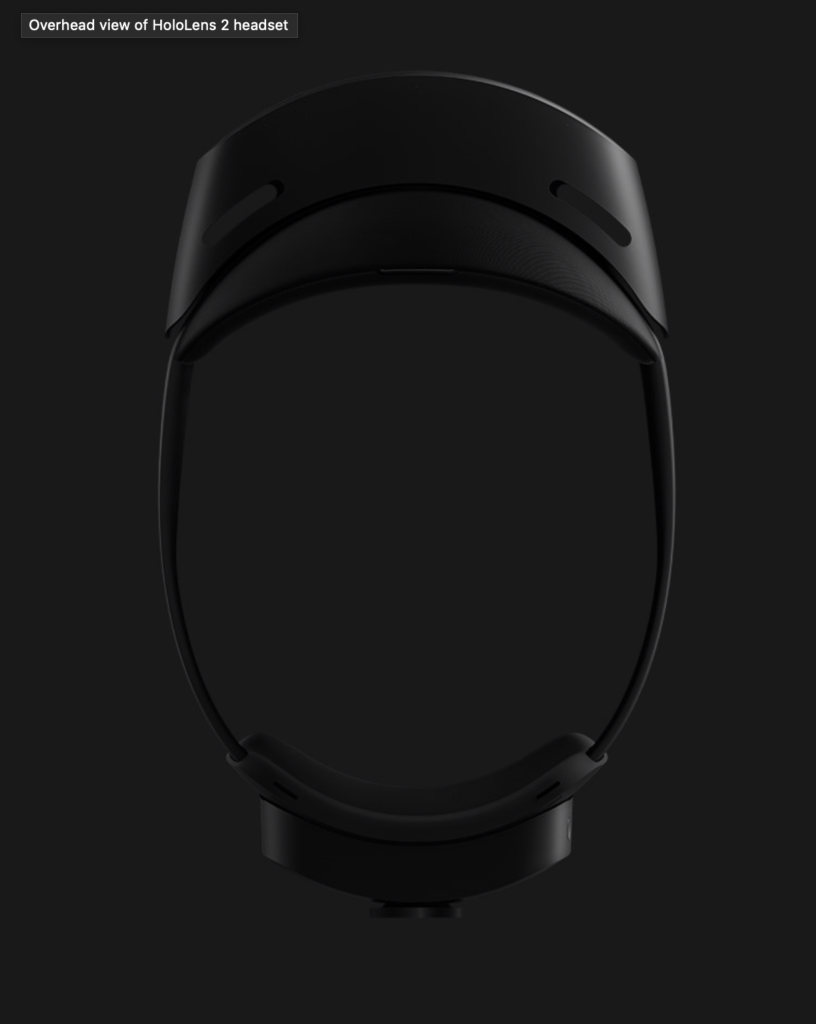
The first Hololens was great. It was one of the first to be completely self-contained, it was free of any connection to any phone, tablet, or PC. It seemed like a perfect headset to get the ball rolling, and it was hard to imagine what key features would really push it into a next level. Microsoft saw that, and what they did with version 2 was impressive, yet safe. They didn’t change the experience dramatically, yet they changed it enough to where you felt like the experience was simply better. This version includes flawless eye tracking, a better sense of what a hand is while it makes the hand tracking better, and a much improved field of view. These simple improvements should be contagious to the industry.
Another new feature is the improved simplicity to the wearability of this piece of hardware. If you were a consumer of the last product, you noticed its uncomfortable fit. It is much more comfortable on your head making long projects with AR much more doable. Not only is it more convenient to wear, but it is much more accessible for people with eye glasses. The last version was a pain to operate while wearing your prescribed glasses, but now the Hololens slides on your head like a baseball cap, and the rest of the experience is right in front of your eyes like you are only looking through windows.
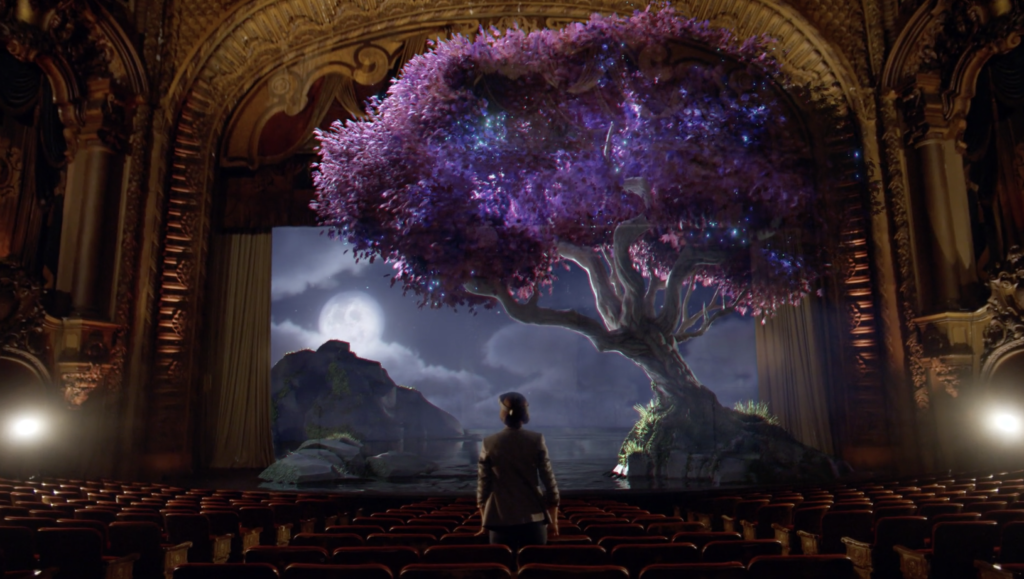
Speaking of in front of your eyes, the Hololens 2 features a flip-up visor that is much more useful than it sounds. (Not the same as Samsung’s foldable phones.) Unlike the first version of this headset, you don’t need to take the headset completely off to simply scratch your head or rub your eyes. It makes the headset something that you can keep on longer than any other AR or VR headset.
Eye tracking: How close are we to mind reading?
No ar vr headset or mixed reality headset has yet to incorporate eye tracking tech at a high level, but the Hololens 2 will put an end to that trend. There have been virtual headsets with eye tracking inside, but we haven’t seen a company do anything special with it. The HTC Vive Pro Eye, Varjo VR-1, and Magic Leap are the first that come to mind. There is much more mixed reality technology that has not made it into headsets, but let’s add the Hololens 2 to that list.
The eye tracking in the Hololens us duel proposed. It measures eye movement in a way that allows you to interact with virtual objects. There are many ways Microsoft has worked to develop this feature, and developers will be anxious to get a hold of this feature as well. The second use for the eye tracking is the biometric security it offers. Hololens version 2 offers iris scanning from the power of Windows Hello. This means users can put the headset on and instantly be logged into their personal Windows account and the headset can adjust to their personal preferences.
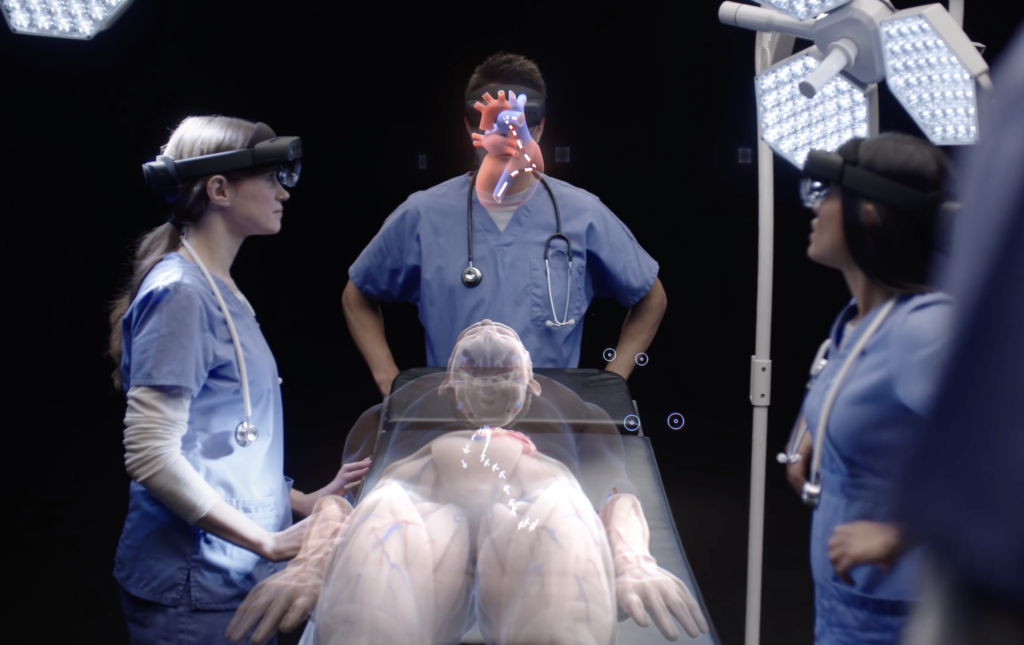
Another impressive adage is that the Hololens 2 can preform eye tracking through a set of eye glasses as well. Most, if not all other eye tracking systems experience some problems when dealing with an extra pair of eye glasses from a user. The Hololens 2 is anticipated and proved to not have any problems in that regard. This has been mentioned before, but regular prescription eye glasses fit seamlessly on your head while wearing the headset.
Eye tracking and voice command will work together heavily in this headset. The eye tracking is important, but by itself it is hard to incorporate without reading your mind. You have the power to simply look at a virtual object and to say a command like “pick up” and the headset will lift it. This is very handy when putting something together or fixing a piece of machinery and your hands are full. When you look into the future with what eye tracking could hold, it gets weird. Alex Kipman, Microsoft Technician, says that eye tracking could eventually read your emotions by tracking tiny eye movements and where you are looking. Weird stuff, and I’m not sure what kind of use you could find for it in a place of business.
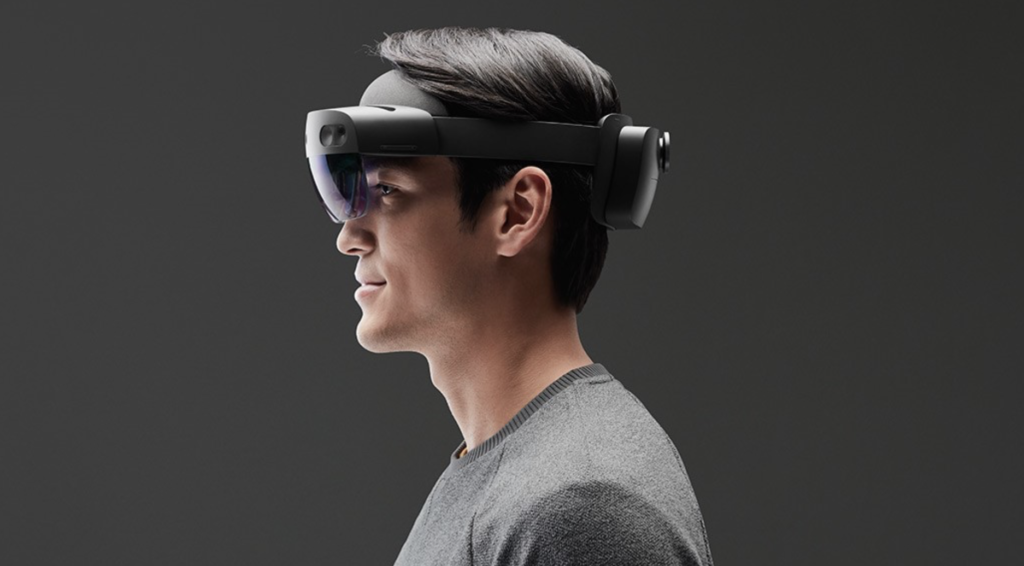
A field of view worth talking about about
The first Hololens was released about 3 years ago, so we will give Mircrosoft a break, but we will be honest as well. The field of view on that headset was awful. The headset was great, but it was nearly impossible to get a lot done when you’re looking through a field of about 3 inches in front of your face. The real full field of view was roughly 30°. That isn’t anything that they should be proud of, but when it was released, no one really found a problem with it because of the functionality of the product all around. A new view was needed, and developers followed through.
The Hololens 2 has a field of view of 52°, which might not seem like a huge upgrade. Microsoft is on the record of saying that it effectively doubles the viewing area of the headset. Now it feels like it is about 5 or 6 inches of viewing through this headset, which is doubled. It is also more vertical as well, meaning that holograms have a chance to be more life-like and real sized when looking at them through augmented reality. One problem Microsoft has been trying to fix is the holograms simply disappearing when you slightly turn your head. Everyone presumed that this would be taken care of with a wider field of view, but it wasn’t that easy. They have been some holograms that’ll evaporate even when they are slightly cut out of your view. Microsoft is still working hard to fix this problem.
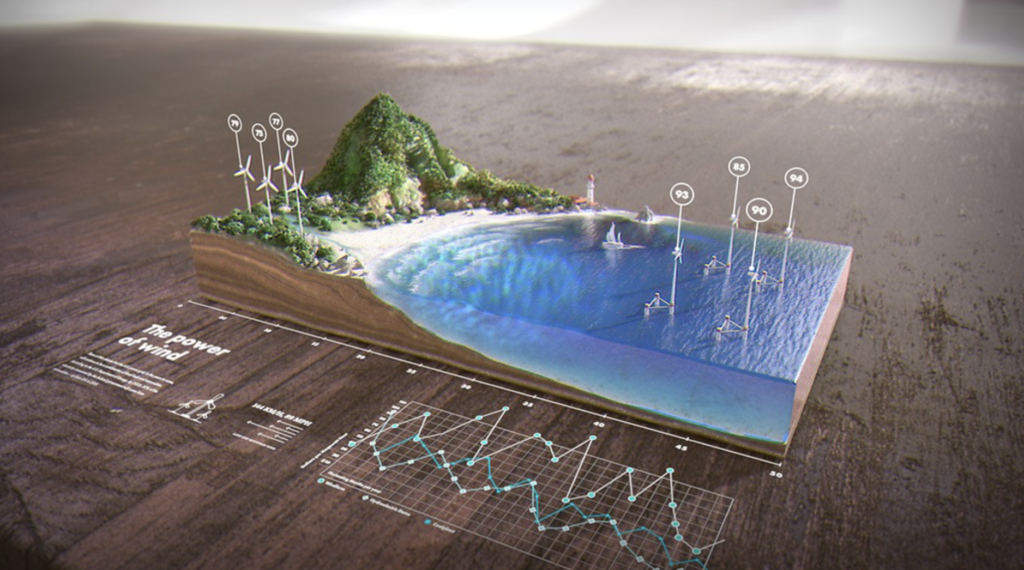
One of the many reasons that the field of view has increased is the resolution. The original Hololens had 720p per eye, as the new Hololens has a solid 2K display per eye. The density of objects is still the same at 47 pixels per degree. PPD is the way the density of objects, much like any pixels on a screen. This has been reported that this is “retina” level of resolution, although it still could be improved if it were more dense. The objects look somewhat ghostly, as you can see through them. This might have a real purpose to it. To be able to see what is behind a virtual object and to still interact with the real world around you. Ideally, you could be able to make the holograms more dense with a simply command. This is the kind of view we have been waiting on.
Overall, the graphics and viewing experience wasn’t a total revamp from the first Holoens. The field of view was a huge jump, but the lack of density was noticeable in the holograms which sadly took away from their 2k display per eye. The Magic Leap still has the potential to demonstrate better graphics, although we are still unsure how much of it will be on its own power or the clouds power. Only time will tell.
The power of touch
There are no controller that come with the Hololens. In fact, there are no controllers that are compatible with the Hololens. The Holoens prides itself on hand gestures, eye tracking, and voice commands. For this to be a real thing, the hand tracking systems inside the Holones has to improve. The tracking sensors can now track an impressive 25 points of articulation through the hand and the wrist. This means the direction of the palm, finger bending, hand motion, and the ability to pick things up have improved as well. This is a big jump knowing that the first Hololens used finger clicks and simpler moves. This feels more advanced than the Magic Leap One, and lightyears ahead of the first consumer version of the Hololens.
To pick something up or to move it, you will simply place your hand in the center of it and make a fist, and releasing the fist when you have a desired location, hopefully in its center of gravity. To stretch an image or to make a hologram bigger, you would place both hands on/in the object, close your fist, and then spread them apart and release. Pretty simple, but it will take some time getting used to, especially if you someone that loves haptic feedback. The demo they use in the Hololens room for this is fantastic.
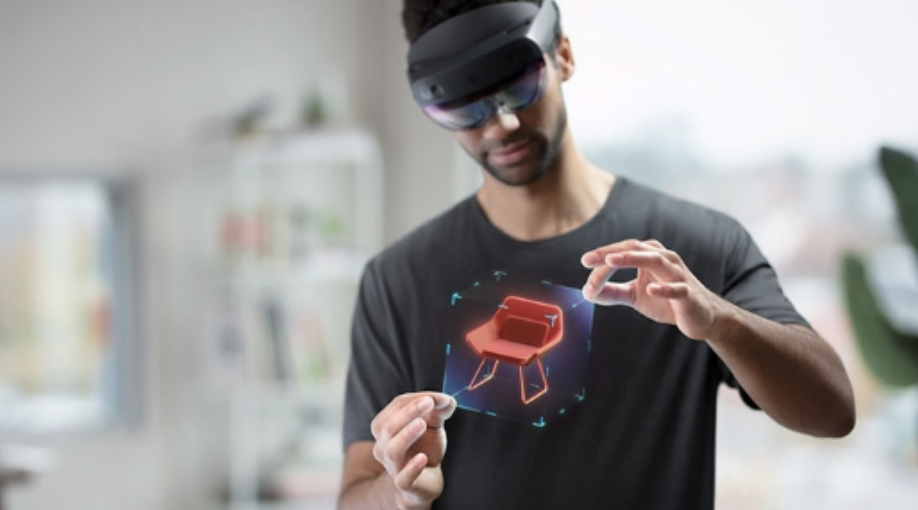
A voice feed back and eye tracking demo is pretty impressive on the Hololens 2. Four crystals throughout the room appear. When you look at one specifically and say “explode,” it will do exactly as you say. It is a simple test but it shows the exactness of this wearable computer. You can also scroll with your eyes. It is a tricky maneuver to master, but when you have it, it is very helpful. Something every smart phone user has been begging for since the dawn of iPhones.
When asked about the future of Hololens AR VR tech, Carl Ledbetter gave this insight regarding mind reading and brain activity paired with the Hololens. “We use this to measure brainwave activity, and we can measure how much load is being put on somebody’s mind,” says Ledbetter. “We didn’t necessarily use this much on HoloLens, but we see this as an opportunity … we’re using it on some other things.”
This gives some insight already on what we can expect from the third version of the Hololens. That project has already in full force for a few months now, and more leaks will be sure to come. App developers already have the software available as well. This not only helps them with augmented reality applications, but with all kinds of apps.
Connecting all around
Something Microsoft has emphasized inside this headset is the multiuser mixed reality capabilities. Through Microsoft’s Azure, you can experience the same ar and vr scenes with many users at once in the Holoens, and now even in phones. Google and Apple are already on this train of idea.
That biggest lure into this technology is the big projects that you can be working on with a coworker while not in the same place. Imagine working on a 3D model of something that you have had in the works for sometime, and being able to design it to your exact specifications. Using cloud anchors, it has became nearly easy to share the same holograms and the exactness they entail all while over the cloud with your working colleagues or factory workers that are also using an AR headset
Like the scene in Star Wars when everyone is gathered around the table while they all look at the same hologram, Microsoft has nearly made the same thing, just a little more powerful. Assuming you are using the headset to access this feature and not a phone, you will be able to edit the holograms and their material nearly perfectly, all while sharing the new pieces with your workers and/or crowd that is watching you work.
Not only can you collaborate with people, but you can also show people in live time how built something without having tor record yourself doing it. This makes live helping a very real possibly as well when both parties have a headset. This technology was designed for only a few things, but can be utilized in many different ways.
What is missing, and what can be improved?
You will hear this for quiet some time, but the Hololens 2 is a huge upgrade from the original device. But that doesn’t mean that this headset is perfect. In fact, it is far from it. The battery life did not improve greatly, in fact the battery life remained about the same as before on the orignal device. the field was improved, but that was expected. The virtual objects are still a bit glitchy, and that comes down to the holographic make up of them. This makes for an immersive experience that could be improved, and here is how.
One thing I believe that could improve the experience overall is a controller of some sorts. I know the headset is supposed to rely off of hand movements and voice controls, but something that can be a bit tedious. The tracking of the two have greatly improved, but still to a point where there are glitches. And that is cause of concern for many people. Here is why.
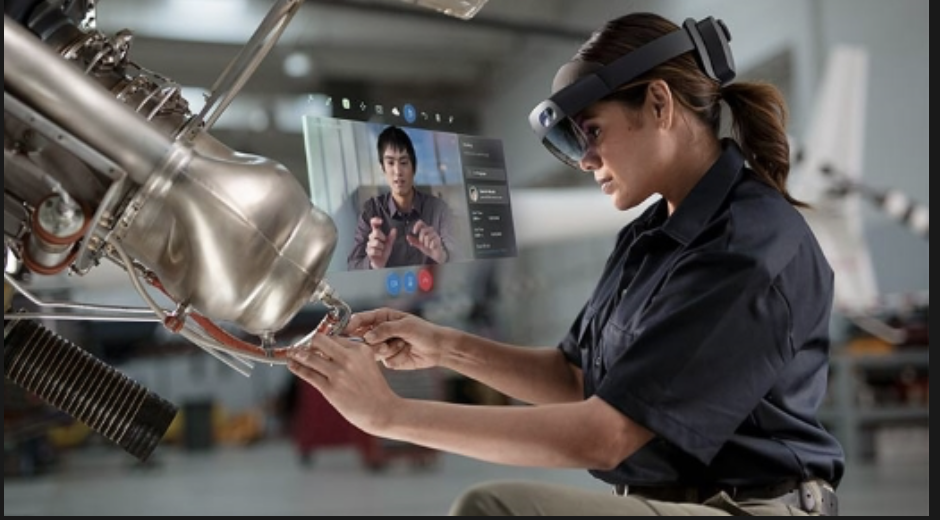
If you’re heavily relying on your Microsoft HoloLens for work and demos, you might be sorry as of now. There is not as many glitches compared to the first version, but there is some still. And they are noticeable to a point of frustration. If you’re using this as your only work tool, it can nearly get in the way too much. A controller of some kind would help with the potential issues, as well as haptics would.
Haptics of some sorts would go a long distance with the headset. There are plenty of ways that Microsoft could incorporate this and all of them could help more than not having any at all. One idea is to include the haptics inside the headset. This could cause little vibrations on the side of the head, the front, and the back. It would help with designing and knowing how much you are actually moving an object. 1 inch per click, or anything of that sort would help users. Outside of the head, Microsoft could go a bit extreme with how they help companies with haptics. They could include a set of sensory gloves, finger wraps, or even bracelets that extend to one finger. There are plenty of ideas that Microsoft could use, it is up to them to incorporate haptics.
Kipman, one of the makers of the headset left this statement. “It’s absolutely also in our road map to think about holding things in the hand. By the way, not just holding things that we create. What if I am a person with a real physical hammer? And my hand’s occupied, or I’m holding a coffee cup, and I still want to touch my hologram?”
What the future holds and why it is not what you expect
It is obvious that Microsoft is relying on the cloud and Azure to let the Hololens 2 do more. Rhea includes it placing holograms better in 3D space, more detailed images, and better mapping. The future of this headset will be largely based on what Microsoft can do with the computing power inside of the headset. If they are able to master the scanning cameras, sensors, and navigating the 3D worlds, then this headset will continue to improve.
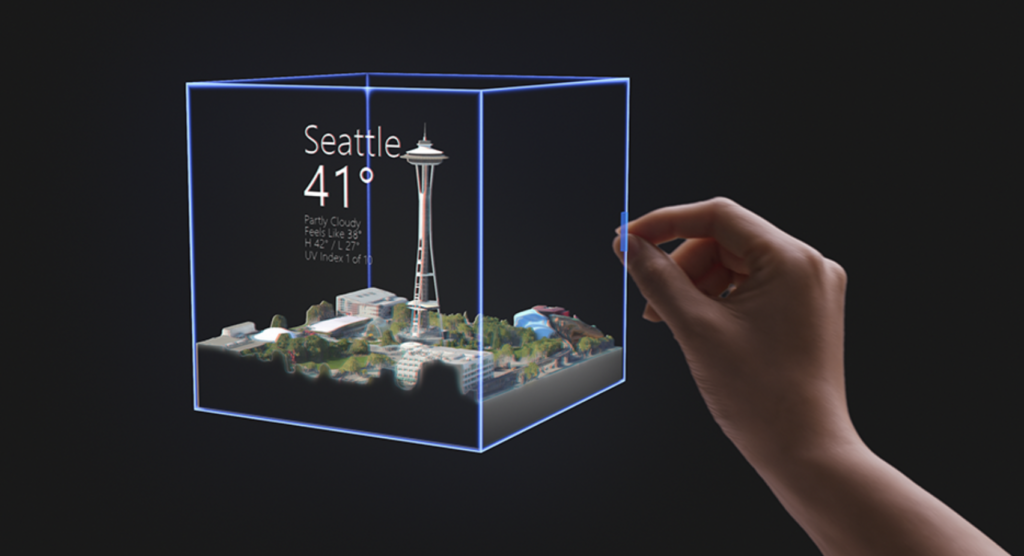
The Hololens 2 does not have any LTE capabilities, and thats not the worst thing ever. The headset is able to work off Wi-Fi and Bluetooth only right now, and that is fitting. But when Microsoft wants to speed up everything about this headset, then LTE and 5G is going to be where they should turn to. 5G would not only speed the headset itself up, but make sharing and collaborating more natural and organic.
Kipman is also on record talking about what the Hololens is capable of, and how it really isn’t for everyone just yet. He states that “there are plenty of times when I’m in my office, and I’m using my keyboard, mouse and my PC monitor to do any number of things.”
The 5G and finding room for haptics would be a huge jump, but what else can they do for enterprise customers? Just like they should do, Microsoft is not playing all of their cards right away. They might have the technology to launch a headset more powerful than they one they just released, but why let the competitors know what is up your sleeve? Kipman has been hesitant in saying what this product will look like in 5 years, and he even hinted at the next Hololnes not being years away like many thought. With all of this said, we can only use our imagination to guess what the future holds in augmented reality.






















